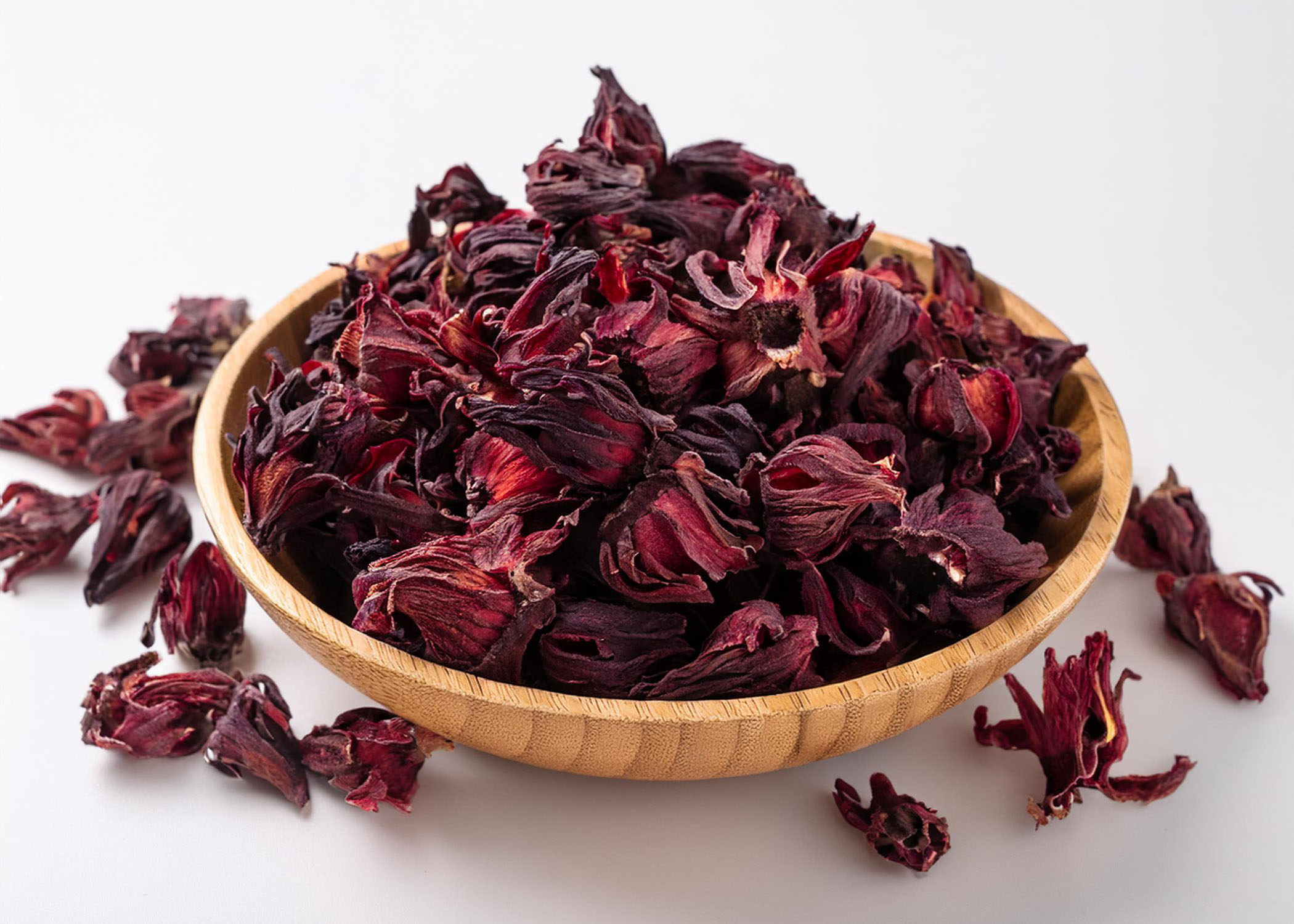Botanical Name: Hibiscus sabdariffa
Also Called: Roselle
Hibiscus is a vibrant, tropical flowering plant known for its strikingly colorful blooms and rich cultural significance. There are hundreds of species of hibiscus, with flower colors ranging from bright reds and pinks to yellows and whites, making them a popular ornamental plant in gardens worldwide.
One of the most famous varieties is Hibiscus sabdariffa, which is renowned for its culinary and medicinal uses. The dried petals are used to make hibiscus tea, a tangy, tart beverage that boasts a deep ruby-red hue. Hibiscus tea, often referred to as “sorrel” in the Caribbean or “karkade” in North Africa and the Middle East, has been enjoyed for centuries, both for its refreshing flavor.
In Egypt and Sudan, the drink made from hibiscus flowers is served during weddings and celebrations as a symbol of love and life. In Mexico, the drink known as “agua de Jamaica,” made from steeping hibiscus flowers, is a popular summertime beverage that is often sweetened and served chilled, offering a refreshing way to cool off in the heat.
In the culinary world, hibiscus is used beyond teas. The dried petals are often incorporated into jellies, sauces, and desserts, adding a unique tart flavor to dishes. In some cultures, hibiscus is used to make fermented beverages or even added to savory recipes like stews and soups, where it imparts a zesty, citrus-like tang.

